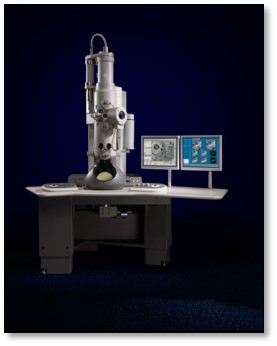+ Open data
Open data
- Basic information
Basic information
| Entry | Database: EMDB / ID: EMD-23120 | |||||||||
|---|---|---|---|---|---|---|---|---|---|---|
| Title | 3D reconstruction of an autophagy tethering factor | |||||||||
 Map data Map data | EPG5 is a large-sized metazoan protein proposed to serve as a tethering factor to enforce autophagosome-lysosome/late endosome fusion specificity. | |||||||||
 Sample Sample |
| |||||||||
| Biological species |  Homo sapiens (human) Homo sapiens (human) | |||||||||
| Method | single particle reconstruction / negative staining / Resolution: 21.0 Å | |||||||||
 Authors Authors | Nam SE / Yip CK | |||||||||
| Funding support |  Canada, 1 items Canada, 1 items
| |||||||||
 Citation Citation |  Journal: Commun Biol / Year: 2021 Journal: Commun Biol / Year: 2021Title: Insights on autophagosome-lysosome tethering from structural and biochemical characterization of human autophagy factor EPG5. Authors: Sung-Eun Nam / Yiu Wing Sunny Cheung / Thanh Ngoc Nguyen / Michael Gong / Samuel Chan / Michael Lazarou / Calvin K Yip /   Abstract: Pivotal to the maintenance of cellular homeostasis, macroautophagy (hereafter autophagy) is an evolutionarily conserved degradation system that involves sequestration of cytoplasmic material into the ...Pivotal to the maintenance of cellular homeostasis, macroautophagy (hereafter autophagy) is an evolutionarily conserved degradation system that involves sequestration of cytoplasmic material into the double-membrane autophagosome and targeting of this transport vesicle to the lysosome/late endosome for degradation. EPG5 is a large-sized metazoan protein proposed to serve as a tethering factor to enforce autophagosome-lysosome/late endosome fusion specificity, and its deficiency causes a severe multisystem disorder known as Vici syndrome. Here, we show that human EPG5 (hEPG5) adopts an extended "shepherd's staff" architecture. We find that hEPG5 binds preferentially to members of the GABARAP subfamily of human ATG8 proteins critical to autophagosome-lysosome fusion. The hEPG5-GABARAPs interaction, which is mediated by tandem LIR motifs that exhibit differential affinities, is required for hEPG5 recruitment to mitochondria during PINK1/Parkin-dependent mitophagy. Lastly, we find that the Vici syndrome mutation Gln336Arg does not affect the hEPG5's overall stability nor its ability to engage in interaction with the GABARAPs. Collectively, results from our studies reveal new insights into how hEPG5 recognizes mature autophagosome and establish a platform for examining the molecular effects of Vici syndrome disease mutations on hEPG5. | |||||||||
| History |
|
- Structure visualization
Structure visualization
| Movie |
 Movie viewer Movie viewer |
|---|---|
| Structure viewer | EM map:  SurfView SurfView Molmil Molmil Jmol/JSmol Jmol/JSmol |
| Supplemental images |
- Downloads & links
Downloads & links
-EMDB archive
| Map data |  emd_23120.map.gz emd_23120.map.gz | 7.9 MB |  EMDB map data format EMDB map data format | |
|---|---|---|---|---|
| Header (meta data) |  emd-23120-v30.xml emd-23120-v30.xml emd-23120.xml emd-23120.xml | 12.9 KB 12.9 KB | Display Display |  EMDB header EMDB header |
| Images |  emd_23120.png emd_23120.png | 30.8 KB | ||
| Archive directory |  http://ftp.pdbj.org/pub/emdb/structures/EMD-23120 http://ftp.pdbj.org/pub/emdb/structures/EMD-23120 ftp://ftp.pdbj.org/pub/emdb/structures/EMD-23120 ftp://ftp.pdbj.org/pub/emdb/structures/EMD-23120 | HTTPS FTP |
-Validation report
| Summary document |  emd_23120_validation.pdf.gz emd_23120_validation.pdf.gz | 287.6 KB | Display |  EMDB validaton report EMDB validaton report |
|---|---|---|---|---|
| Full document |  emd_23120_full_validation.pdf.gz emd_23120_full_validation.pdf.gz | 287.2 KB | Display | |
| Data in XML |  emd_23120_validation.xml.gz emd_23120_validation.xml.gz | 5.4 KB | Display | |
| Arichive directory |  https://ftp.pdbj.org/pub/emdb/validation_reports/EMD-23120 https://ftp.pdbj.org/pub/emdb/validation_reports/EMD-23120 ftp://ftp.pdbj.org/pub/emdb/validation_reports/EMD-23120 ftp://ftp.pdbj.org/pub/emdb/validation_reports/EMD-23120 | HTTPS FTP |
-Related structure data
- Links
Links
| EMDB pages |  EMDB (EBI/PDBe) / EMDB (EBI/PDBe) /  EMDataResource EMDataResource |
|---|
- Map
Map
| File |  Download / File: emd_23120.map.gz / Format: CCP4 / Size: 8.4 MB / Type: IMAGE STORED AS FLOATING POINT NUMBER (4 BYTES) Download / File: emd_23120.map.gz / Format: CCP4 / Size: 8.4 MB / Type: IMAGE STORED AS FLOATING POINT NUMBER (4 BYTES) | ||||||||||||||||||||||||||||||||||||||||||||||||||||||||||||||||||||
|---|---|---|---|---|---|---|---|---|---|---|---|---|---|---|---|---|---|---|---|---|---|---|---|---|---|---|---|---|---|---|---|---|---|---|---|---|---|---|---|---|---|---|---|---|---|---|---|---|---|---|---|---|---|---|---|---|---|---|---|---|---|---|---|---|---|---|---|---|---|
| Annotation | EPG5 is a large-sized metazoan protein proposed to serve as a tethering factor to enforce autophagosome-lysosome/late endosome fusion specificity. | ||||||||||||||||||||||||||||||||||||||||||||||||||||||||||||||||||||
| Projections & slices | Image control
Images are generated by Spider. | ||||||||||||||||||||||||||||||||||||||||||||||||||||||||||||||||||||
| Voxel size | X=Y=Z: 4.6 Å | ||||||||||||||||||||||||||||||||||||||||||||||||||||||||||||||||||||
| Density |
| ||||||||||||||||||||||||||||||||||||||||||||||||||||||||||||||||||||
| Symmetry | Space group: 1 | ||||||||||||||||||||||||||||||||||||||||||||||||||||||||||||||||||||
| Details | EMDB XML:
CCP4 map header:
| ||||||||||||||||||||||||||||||||||||||||||||||||||||||||||||||||||||
-Supplemental data
- Sample components
Sample components
-Entire : Autophagy tethering factor, EPG5
| Entire | Name: Autophagy tethering factor, EPG5 |
|---|---|
| Components |
|
-Supramolecule #1: Autophagy tethering factor, EPG5
| Supramolecule | Name: Autophagy tethering factor, EPG5 / type: complex / ID: 1 / Parent: 0 / Macromolecule list: all |
|---|---|
| Source (natural) | Organism:  Homo sapiens (human) Homo sapiens (human) |
| Recombinant expression | Organism:  Baculovirus expression vector pFastBac1-HM Baculovirus expression vector pFastBac1-HM |
| Molecular weight | Theoretical: 297.83 kDa/nm |
-Macromolecule #1: EPG5, ectopic P-granules autophagy protein 5
| Macromolecule | Name: EPG5, ectopic P-granules autophagy protein 5 / type: protein_or_peptide / ID: 1 / Enantiomer: LEVO |
|---|---|
| Source (natural) | Organism:  Homo sapiens (human) Homo sapiens (human) |
| Recombinant expression | Organism:  Baculovirus expression vector pFastBac1-HM Baculovirus expression vector pFastBac1-HM |
| Sequence | String: MSYYHHHHHH DYDIPTTEN L YFQGAMGS DY KDDDDKG SGIQRPTSTM AEAVKPQRRA KAKASRTKTK EKKKYETPQR EESSEVSLPK TSREQEIPSL ACEFKGDHLK VVTDSQLQDD ASGQNESEMF DVPLTSLTIS NEESLTCNTE PPKEGGEARP CVGDSAVTPK ...String: MSYYHHHHHH DYDIPTTEN L YFQGAMGS DY KDDDDKG SGIQRPTSTM AEAVKPQRRA KAKASRTKTK EKKKYETPQR EESSEVSLPK TSREQEIPSL ACEFKGDHLK VVTDSQLQDD ASGQNESEMF DVPLTSLTIS NEESLTCNTE PPKEGGEARP CVGDSAVTPK VHPGDNVGTK VETPKNFTEV EENMSVQGGL SESAPQSNFS YTQPAMENIQ VRETQNSKED KQGLVCSSEV PQNVGLQSSC PAKHGFQTPR VKKLYPQLPA EIAGEAPALV AVKPLLRSER LYPELPSQLE LVPFTKEQLK ILEPGSWLEN VESYLEEFDS MAHQDRHEFY ELLLNYSRC RKQLLLAEAE LLTLTSDCQN AKSRLWQFKE EQMSVQGICA DQVKVFSYHR YQRVEMNENA LVELKKLFD AKSEHLHQTL ALHSYTSVLS RLQVESYIYA LLSSSAVLRS SAIHQQGRAS K QTESIPSD LCQLKECISV LFMFTRRVNE DTQFHDDILL WLQKLVSVLQ RVGCPGDHLF LL NHILRCP AGVSKWAVPF IQIKVLHNPS GVFHFMQSLA LLMSPVKNRA EFMCHMKPSE RKP SSSGPG SGTWTLVDEG GEEDEDPETS WILLNEDDLV TILAQFPFHE LFQHLLGFKA KGDY LPETT RPQEMMKIFA FANSLVELLA VGLETFNRAR YRQFVKRIGY MIRMTLGYVS DHWAQ YVSH NQGSGLAQQP YSMEKLQVEF DELFLRAVLH VLKAKRLGIW LFMSEMPFGT LSVQML WKL FYLMHQVESE NLQQLSSSLQ PAQCKQQLQD PEHFTNFEKC LSSMNSSEEI CLLTTFA QM AQARRTNVDE DFIKIIVLEI YEVSYVTLST RETFSKVGRE LLGTITAVHP EIISVLLD R VQETIDQVGM VSLYLFKELP LYLWQPSASE IAVIRDWLLN YNLTVVKNKL ACVILEGLN WGFAKQATLH LDQAVHAEVA LMVLEAYQKY LAQKPYAGIL SESMKQVSYL ASIVRYGETP ETSFNQWAW NLILRLKLHK NDYGIQPNCP AVPFSVTVPD MTESPTFHPL LKAVKAGMPI G CYLALSMT AVGHSIEKFC AEGIPLLGIL VQSRHLRTVV HVLDKILPLF YPCQYYLLKN EQ FLSHLLL FLHLDSGVPQ GVTQQVTHKV AQHLTGASHG DNVKLLNSMI QAHISVSTQP NEV GPVAVL EFWVQALISQ HLWYREQPIL FLMDHLCKAA FQLMQEDCIQ KLLYQQHKNA LGYH CDRSL LSSLVSWIVA GNITPSFVEG LATPTQVWFA WTVLNMESIF EEDSQLRRVI EGELV INSA FTPDQALKKA QTQLKLPIVP SLQRLLIYRW AHQALVTPSD HPLLPLIWQK FFLLYL HRP GPQYGLPIDG CIGRRFFQSP AHINLLKEMK RRLTEVADFH HAASKALRVP AEGSEGL PE SHSGTPGYLT SPELHKELVR LFNVYILWLE DENFQKGDTY IPSLPKHYDI HRLAKVMQ N QQDLWMEYLN MERIYHEFQE TVGLWTQAKL ESHSTPCSLS VQLDFTDPLL AKERVLSNL RKHEAPQPPL ALHPTKPPVP VISSAVLLSQ KDATQLVCTD LNLLQQQART AALRESQQVA LDGELLDTM PKQYVNREEQ TTLHLECRGS SGKKCQGAAV VTVQFEGMHK NEAISQQLHV L RKEVKQLQ AEAAKPPSLN IVEAAVHAEN LITALVNAYK LQPTPGIQKV GISLFFTIVD YV SDETQRH PPTRQFFTSC IEILGQVFIS GIKSECRKVL ETILKNSRLC SLLSPFFTPN AAP AEFIQL YEQVVKFLSE DNSDMIFMLL TKFDLKQWLS ATKPPLSDRT RLLESIHLAL TAWG LEPDE DILMPFNLFC KHWTYLLLYQ FPDQYSDILR LLMQSSAEQL LSPECWKATL RALGC CAPS CQQGAASTEG AVLPSSSDAL LSDKQVMETI QWLSDFFYKL RLSKMDFKSF GLFSKW SPY MADVKTFLGY LVKRLIDLEM TCLAQDPTAS RKTVLKSLHS VIIQLFKPWI LVLEDNE SS QQRHYPWLES DTVVASSIVQ LFTDCIDSLH ESFKDKLLPG DAGALWLHLM HYCEACTA P KMPEFILYAF HSTYRKLPWK DLHPDQMLME AFFKVERGSP KSCFLFLGSV LCEVNWVSV LSDAWNSSPH PETRSMIVCL LFMMILLAKE VQLVDQTDSP LLSLLGQTSS LSWHLVDIVS YQSVLSYFS SHYPPSIILA KESYAELIMK LLKVSAGLSI PTDSQKHLDA VPKCQAFTHQ M VQFLSTLE QNGKITLAVL EQEMSKLLDD IIVFNPPDMD SQTRHMALSS LFMEVLMMMN NA TIPTAEF LRGSIRTWIG QKMHGLVVLP LLTAACQSLA SVRHMAETTE ACITAYFKES PLN QNSGWG PILVSLQVPE LTMEEFLQEC LTLGSYLTLY VYLLQCLNSE QTLRNEMKVL LILS KWLEQ VYPSSVEEEA KLFLWWHQVL QLSLIQTEQN DSVLTESVIR ILLLVQSRQN LVAEE RLSS GILGAIGFGR KSPLSNRFRV VARSMAAFLS VQVPMEDQIR LRPGSELHLT PKAQQA LNA LESMASSKQY VEYQDQILQA TQFIRHPGHC LQDGKSFLAL LVNCLYPEVH YLDHIR |
-Experimental details
-Structure determination
| Method | negative staining |
|---|---|
 Processing Processing | single particle reconstruction |
| Aggregation state | particle |
- Sample preparation
Sample preparation
| Buffer | pH: 8 |
|---|---|
| Staining | Type: NEGATIVE / Material: Uranyl Formate |
| Sugar embedding | Material: Uranyl Formate |
| Grid | Material: COPPER / Pretreatment - Type: GLOW DISCHARGE |
- Electron microscopy
Electron microscopy
| Microscope | FEI TECNAI SPIRIT |
|---|---|
| Image recording | Film or detector model: FEI EAGLE (4k x 4k) / Average electron dose: 25.0 e/Å2 |
| Electron beam | Acceleration voltage: 120 kV / Electron source: LAB6 |
| Electron optics | Illumination mode: OTHER / Imaging mode: BRIGHT FIELD / Nominal magnification: 49000 |
| Experimental equipment |  Model: Tecnai Spirit / Image courtesy: FEI Company |
 Movie
Movie Controller
Controller



 UCSF Chimera
UCSF Chimera






 Z (Sec.)
Z (Sec.) Y (Row.)
Y (Row.) X (Col.)
X (Col.)





















